2023Yearly Report
ANNUAL IMPACT REPORT
Download PDF
Our Programs and Processes
Climate Action Approach
Evolving our Methodology
In our 2022 Impact Report, we introduced Aii’s Climate Action Approach¹⁰, a five-step methodology designed to lead producers on their journey towards decarbonization. Since the Approach’s inception, we’ve continued to refine and evolve our methodology to achieve even greater GHG emission savings in the industry.
In our 2022 Impact Report, we introduced Aii’s Climate Action Approach¹⁰, a five-step methodology designed to lead producers on their journey towards decarbonization. Since the Approach’s inception, we’ve continued to refine and evolve our methodology to achieve even greater GHG emission savings in the industry.
The program consists of 5 steps
10 Carbon Leadership Program (see 2022 Impact Report) has been renamed Climate Action Approach
In 2023, we enrolled 221 factories in CTA (Step 1) which enables producers to assess their maturity and estimate their carbon reduction potential.
We expanded our target-setting efforts (Step 2) to include Cascale’s Manufacturer Climate Action Program (MCAP). This program, designed to accelerate a manufacturer’s decarbonization journey, includes four steps, with action planning being optional.
Recognizing the critical role of action plans in demonstrating target viability and potential, Gap approached us to help their producers establish them. In collaboration with our partner, RESET Carbon, we supported three Gap suppliers, each with multiple facilities globally, in developing these essential plans. This collaboration not only met Gap’s needs, but also extended our scope from our facility-level Carbon Target Setting (CTS) program to the broader producer level, which often involves multiple facilities worldwide.
We extended our implementation efforts (Step 3) by establishing the Climate Solutions Portfolio (CSP), which has a dedicated section in this report due to its significance in achieving our vision and mission. We also launched Carbon Target Monitoring (CTM) (Step 4), a program that aims to drive factory commitment and action toward their climate objectives.
Third-party data validation (Step 5), aimed at supporting carbon accounting requirements, is still in the conceptual phase. Aii is collaborating with various industry stakeholders to align on carbon accounting principles.
To highlight the comprehensive nature of Aii’s Climate Action Approach, we’ve compiled an overview of the tiers and impact areas addressed by each solution. This overview also incorporates our Climate Solutions, which are an integral part of Implementation (Step 3), providing you with a holistic understanding of the full scope of our initiatives.
We expanded our target-setting efforts (Step 2) to include Cascale’s Manufacturer Climate Action Program (MCAP). This program, designed to accelerate a manufacturer’s decarbonization journey, includes four steps, with action planning being optional.
Recognizing the critical role of action plans in demonstrating target viability and potential, Gap approached us to help their producers establish them. In collaboration with our partner, RESET Carbon, we supported three Gap suppliers, each with multiple facilities globally, in developing these essential plans. This collaboration not only met Gap’s needs, but also extended our scope from our facility-level Carbon Target Setting (CTS) program to the broader producer level, which often involves multiple facilities worldwide.
We extended our implementation efforts (Step 3) by establishing the Climate Solutions Portfolio (CSP), which has a dedicated section in this report due to its significance in achieving our vision and mission. We also launched Carbon Target Monitoring (CTM) (Step 4), a program that aims to drive factory commitment and action toward their climate objectives.
Third-party data validation (Step 5), aimed at supporting carbon accounting requirements, is still in the conceptual phase. Aii is collaborating with various industry stakeholders to align on carbon accounting principles.
To highlight the comprehensive nature of Aii’s Climate Action Approach, we’ve compiled an overview of the tiers and impact areas addressed by each solution. This overview also incorporates our Climate Solutions, which are an integral part of Implementation (Step 3), providing you with a holistic understanding of the full scope of our initiatives.
Overview of Our Programs
How We Create Impact
Our 2023 Impact Report goes beyond methodologies to offer tangible examples of our robust approach to meeting 2030 targets.
In 2023, we positioned ourselves for significant, strategic growth by refining our processes and expanding our team in production regions. As a result, producers have started 60% more Climate Action Approach programs in 2023 compared to 2022.
In 2023, we positioned ourselves for significant, strategic growth by refining our processes and expanding our team in production regions. As a result, producers have started 60% more Climate Action Approach programs in 2023 compared to 2022.
Our dedication to actively reducing carbon emissions in the textile and apparel industries is embodied in our Impact Programs and Climate Portfolio Solutions. From a programmatic perspective, our goal is to transition our early-stage initiatives (view the current stage of each program and solution in the previous chart) from pilot status to broad scalability, as exemplified by our Clean by Design Energy and Water Efficiency Program, which initially launched in 2018 with select producers and has since expanded to 301 producers across various regions, saving each producer, on average, per program participation an 8.98% of GHG emissions (including CbD & CbD+ overall).
Recognizing the inherent diversity among producers — varying setups, locations, skills, clients, and finances — a fundamental aspect of our strategy is meeting producers where they are to ensure our impact is relevant and sustainable. Over the last years, we have experienced that true transformation happens through collaboration, local adaptation, and empowering producers with the tools and knowledge to safeguard our planet.
Recognizing the inherent diversity among producers — varying setups, locations, skills, clients, and finances — a fundamental aspect of our strategy is meeting producers where they are to ensure our impact is relevant and sustainable. Over the last years, we have experienced that true transformation happens through collaboration, local adaptation, and empowering producers with the tools and knowledge to safeguard our planet.

Case Studies
Case Study /
J.Crew
Case Study /
Marks & Spencer
Benchmarking and Target Setting with a Focus on Collaboration
Impact Metrics
70
Facilities
Completed Carbon Tech Assessments
5
Facilities
Running Carbon & Water Target Setting
3
Facilities
Co-nominated facilities running Carbon & Water Target Setting
“At J.Crew, our collaboration with Aii has helped facilitate crucial internal dialogues. Recognizing sustainability as a critical factor in sourcing, we are strategically integrating these insights into our risk assessments and supply chain management, ensuring the resilience and stability of our operations alongside the beneficial environmental impact of our sourcing communities for the long term.”
- SAMANTHA SHIFFMAN,
manager CSR & sustainability
manager CSR & sustainability
Introduction
In 2022, J.Crew developed a strategic roadmap to reduce emissions throughout its supply chain to align with global sustainability targets. J.Crew understood that the most efficient way to meet their goals would be to collaborate with other brands for maximum impact on their shared supply chains, and they engaged Aii both to establish action plans for carbon and water reduction and to bring together brand partners for cost-sharing and collaboration. Given the broad and sometimes overwhelming range of ESG initiatives, J.Crew was interested in prioritizing their facilities based on data and focusing their efforts where they would have the most impact.
The approach
Together, Aii and J.Crew took the following steps:
- Carbon Tech Assessments: In collaboration with Aii and BluWin, J.Crew initiated a series of 70 Carbon Tech Assessments. These assessments provided critical insights into the reduction potentials of various facilities within their supplier network. Through this analysis, J.Crew identified high-impact facilities and prioritized them for further action.
- Carbon Target Setting (CTS): Leveraging the results of the assessments, J.Crew enrolled five facilities into the Carbon Target Setting program. This initiative aimed to establish actionable plans and reduction targets for both carbon emissions and water usage, with a specific focus on water for J.Crew’s denim mills.
- Collaborative Sponsorship: J.Crew and Aii worked together to arrange for other brands to co-sponsor three shared facilities, fostering a sense of collective responsibility towards sustainability goals.
What's next?
As of the end of 2023, five facilities remain actively engaged in the CTS program, with the first group expected to complete their action plans by April 2024. Following this, the focus will shift toward swift implementation, ensuring that targeted reductions in carbon emissions and water usage are achieved. They will also begin the next round of strategic supplier nominations for the Carbon Leadership Program. J.Crew’s approach of collaboration and focused action is a model for industry peers seeking to drive meaningful change across their supply chains.
A Strategic Approach to Target Setting in Tier 2

Impact Metrics
44
Facilities
Completed Carbon Tech Assessments
37
Facilities
Running Carbon Target Setting with an average goal of 31.4% reduction per facility
“Beyond measuring and tracking emissions in our supply chain, at M&S we want to drive impact on efficiency and decarbonisation in line with our Plan A roadmap to Net Zero. Aii’s Carbon Leadership Program offers structure and support for facilities to understand where and how they can become more efficient; save energy; and as a result, implement a reduction target towards 2030.”
- CERIAN ATWELL,
senior sustainability manager at Marks & Spencer
senior sustainability manager at Marks & Spencer
Introduction
As part of their singular focus on becoming a net zero business by 2040, Marks & Spencer (M&S) sought to implement carbon-reducing interventions in their supply chain that could be replicated industry-wide. With a commitment to reducing greenhouse gas emissions (GHG), conserving energy and water resources, M&S embarked on a strategic approach to target setting in their Tier 2 supplier facilities. It was particularly important to them that their suppliers have support through a trusted partner throughout the process, which led them to partner with Aii.
The approach
Together, M&S and Aii took the following steps:
- In collaboration with Aii and RESET Carbon, M&S initiated a series of Carbon Tech Assessments. These assessments provided critical insights into the reduction potentials of various facilities within their Tier 2 supplier network. Through this analysis, M&S identified high-impact facilities and prioritized them for further action.
- After the assessments, 44 facilities were moved into Carbon Target Setting initiatives in 44 facilities, with the facilities setting an average goal of achieving a 31.4% reduction per facility.
What's next?
By leveraging the insights from Carbon Tech Assessments, M&S gained a deeper understanding of the opportunities for emission reductions across their supply chain, as
well as the crucial next step of setting targets for high-impact facilities. Looking ahead, M&S is evaluating the potential of expanding these efforts into their Tier 1 facilities; their journey sets a strong example for starting with a focused decarbonization approach and using those learnings to increase impact.
well as the crucial next step of setting targets for high-impact facilities. Looking ahead, M&S is evaluating the potential of expanding these efforts into their Tier 1 facilities; their journey sets a strong example for starting with a focused decarbonization approach and using those learnings to increase impact.
Commitment to Measurable Outcomes and High-Quality Data
Our commitment to measurable outcomes and high-quality data allows producers to assess solutions with varying payback periods, ranging from exceptionally swift turnarounds, like our Clean by Design program where the average payback period is 14 months; to medium-term options like rooftop solar; and longer-term options, such as transitioning from coal to cleaner energy sources which takes approximately three to seven years. For producers, it’s essential to understand the business case and align decarbonization planning with financial planning. We’ve seen firsthand how data empowers decision-making, enabling technical staff to gain leadership support for implementing measures.
Our brand partners are pivotal collaborators in our mission, playing a crucial role in engaging producers in our impact programs and (co-) sponsoring program fees. Our brand partners’ trust in Aii is grounded in our rigorous quality assurance process and anchored by measurable outcomes, particularly in CO₂e reductions. All expert contributions undergo peer review by Aii’s technical team, ensuring consistency in methodology, accurate technical application, and that proposed solutions are feasible. The final quantification of emission savings achieved in a factory is subject to verification by Aii staff, and reporting to brands only occurs once this thorough review is completed. For our brand partners, this data serves as a foundation for internal decision-making, strategy development, and monitoring progress against emission targets.
Our brand partners are pivotal collaborators in our mission, playing a crucial role in engaging producers in our impact programs and (co-) sponsoring program fees. Our brand partners’ trust in Aii is grounded in our rigorous quality assurance process and anchored by measurable outcomes, particularly in CO₂e reductions. All expert contributions undergo peer review by Aii’s technical team, ensuring consistency in methodology, accurate technical application, and that proposed solutions are feasible. The final quantification of emission savings achieved in a factory is subject to verification by Aii staff, and reporting to brands only occurs once this thorough review is completed. For our brand partners, this data serves as a foundation for internal decision-making, strategy development, and monitoring progress against emission targets.
Case Study
In the beginning, a Chinese dyeing factory, viewing significant investments as the sole solution for reducing CO2 emissions, experienced a shift in perspective with our CbD Energy and Water Efficiency program. Employing the CbD Scan tool—specifically designed to identify low-hanging fruits—experts from our partner IEM conducted an on-site assessment, revealing steam-saving opportunities valued at approximately $1,200,000, contrary to the factory’s initial doubt. Through strategic restructuring of steam pipes and the repair of valves and meters, these savings were achieved with an investment of less than $500,000. The success spurred the appointment of a dedicated manager to delve deeper into the CbD methodology and independently uncover additional opportunities.
This success story is just one illustration of how Aii’s programs enable factories to uncover untapped energy-saving potential and achieve cost reductions that often surpass their initial expectations.
This success story is just one illustration of how Aii’s programs enable factories to uncover untapped energy-saving potential and achieve cost reductions that often surpass their initial expectations.
We interviewed Bruno, our quality assurance manager, about our QA process:
How has the quality assurance process evolved in 2023, and what adaptations have been made to enhance its effectiveness?
We have built out our quality assurance team to include colleagues in the region. To calibrate quality and ensure consistency of outcomes globally, we have trained all team members and follow the same processes globally.
In your experience, what have been some key insights or learnings gained through overseeing the quality assurance process?
Most importantly, we are all humans. We are based across the globe, and it is very important that every expert and every team member has the same understanding of methodologies, calculations, and ways of working. It is important to stay in dialogue with the experts and ask questions to make sure that we are all aligned. Another key insight was the constant need for database development and updates, including metrics, calculations, and solution- specific methodologies.
Why is it crucial for Aii staff to verify the final quantification of emission savings before reporting to brands, and what specific steps are taken during this verification?
In our industry, there are many different approaches to quantification of emission savings. Through our review, we make sure that we report emission savings in a consistent way to the brand to ensure they compare apples to apples.
Additionally, it is important to us at Aii to verify that the emission savings have really been achieved by the factory and no one is over- or underreporting on savings.
Additionally, it is important to us at Aii to verify that the emission savings have really been achieved by the factory and no one is over- or underreporting on savings.
How does the technical team at Aii collaborate with external experts during the peer review process, and what level of involvement do they have in refining methodologies?
We have several touchpoints with our experts.
It starts with a rigorous selection process where we get to know them and their skills for the first time. Once an expert is approved to work with us, we train them on our methodology and way of working. Afterward, we facilitate regular and open dialogue, which we deepen during shadow visits or when following up on an action plan. Additionally, we connect with our experts regularly and incorporate their learnings through our continuous improvement efforts.
It starts with a rigorous selection process where we get to know them and their skills for the first time. Once an expert is approved to work with us, we train them on our methodology and way of working. Afterward, we facilitate regular and open dialogue, which we deepen during shadow visits or when following up on an action plan. Additionally, we connect with our experts regularly and incorporate their learnings through our continuous improvement efforts.
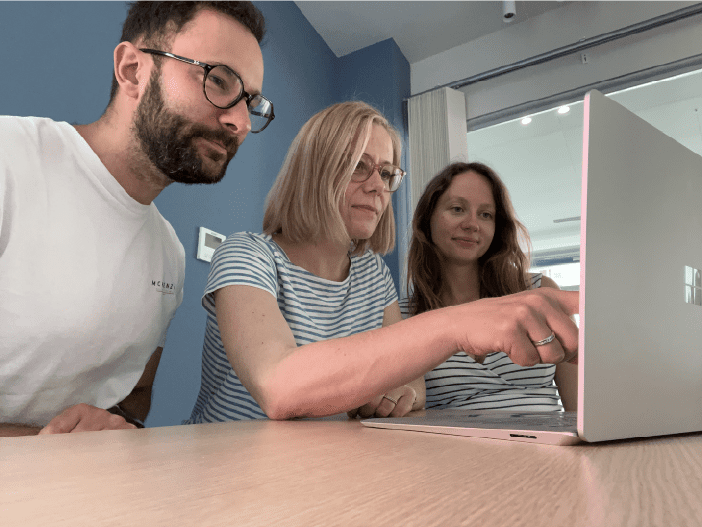
Beyond an improved QA process, Aii has also executed various quality assurance trips to train experts in-person and on-the-ground. We also ensure excellence by having our quality assurance team join experts for onsite factory visits. This collaborative approach serves several crucial purposes:
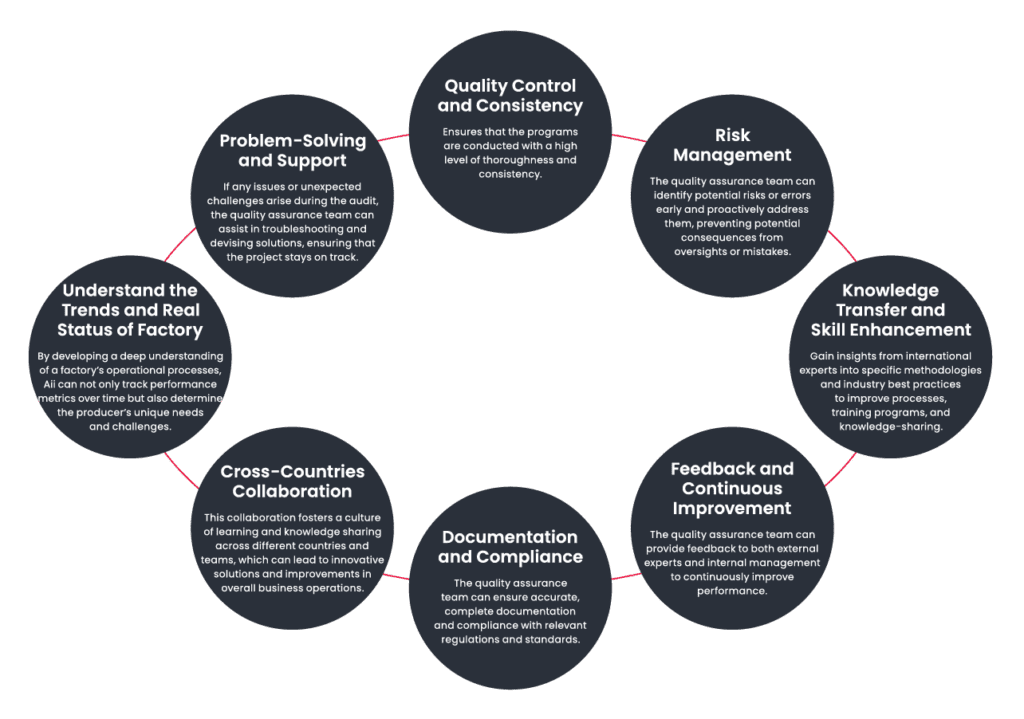
“Aii’s quality assurance team has helped our expert team to further refine the types of factories and processes we could approach, and also to improve the accuracy and rationalization of our measurements and calculations.”
- MS. YANG
deputy director, Hongyu
deputy director, Hongyu
In short, having our quality assurance team shadow external energy audits increases the assessments’ quality, effectiveness, and credibility. In turn, Aii captures learnings and gains a deeper understanding of our partners and the challenges on-site.
Vietnam Quality Assurance and Learning Trip
Vietnam, with its dynamic and rapidly expanding manufacturing sector, has one of the highest carbon footprints in the global textile industry. Recognizing its importance as a textile-sourcing country, the Aii team conducted an expert training and program quality assurance trip in 2023. Patricia Sousa, Aii program operations manager, is spearheading our operations in Vietnam and shared her travel diary with us.
- DAY 1: Stepping into Hanoi, I directly experienced the lively chaos and authenticity. Our first day was dedicated to a CbD Energy & Water Efficiency methodology training, which was joined by our expert partners Vietnam Cleaner Production Centre (VNCPC) and Enterteam, and IDH, our program partner in Vietnam. I found the training very insightful, observing the interaction between experts and Aii. A key takeaway for me was that it is important that our training materials are easy to comprehend, even for non-native speakers.
- DAY 2-5: The second and subsequent days were dedicated to factory visits. Representatives from the factory, the experts, brand representatives, and Aii followed a strict 1-2 day agenda to discuss progress and barriers to implementation, hear technical advice from the experts, and agree on next steps. Typically, the days ended with a dinner, which was a great opportunity to reflect on the day’s learnings, prepare for the next day, and have deep technical discussions.
“Reflecting on our week in Vietnam, I was left very motivated and had a feeling of being able to drive change. The deep technical discussions and shared insights have shown me the many opportunities we have as an industry to reduce emissions.”

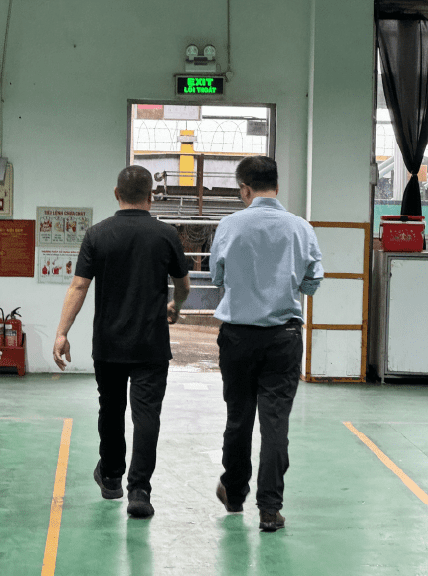
Our 2023 Pilot Programs
In alignment with our “pre-seed - pilot - model - scale” approach, we’ve undertaken multiple pilot projects throughout 2023. These initiatives enable us to test, refine, and optimize strategies before moving to the model stage for full-scale adoption. Our team closely supports and evaluates these pilots, extracting insights for continuous improvements and enhanced approaches.
Renewable Energy Procurement (REP) with Ren Global, Inc. in Taiwan, Province of China
Apparel Impact Institute and Ren Global, Inc. joined forces to pilot a program helping brands build out renewable energy portfolios for their supply chains. The three brand partners aimed to align goals and supply chain energy usage and pursue renewable energy solutions together.
The program aimed to evaluate energy needs across supply chains, assess energy policies and procurement feasibility, analyze potential savings and carbon reduction from renewable adoption, create a roadmap for specific renewable projects, and apply insights to future endeavors.
The program aimed to evaluate energy needs across supply chains, assess energy policies and procurement feasibility, analyze potential savings and carbon reduction from renewable adoption, create a roadmap for specific renewable projects, and apply insights to future endeavors.
KEY ACHIEVEMENTS IN 2023:
- The pilot was initiated in 82 producers from three brands.
- Pilot country: Taiwan, Province of China
- Ren Global, Inc. prepared business cases for onsite solar and offsite wind projects (summarized in the following chart). If all 82 producers implemented onsite PPA, there is an opportunity to decrease carbon emissions by 0.807 Mt CO₂e over 25 years. However, if only half (41 producers) participate in renewable through offshore wind, it could result in even greater savings over a shorter time (5,596 MtCO₂e reduction over 20 years).
- Ren Global, Inc. provided brand partners with an in-depth feasibility analysis detailing the corporate renewable energy procurement landscape in Taiwan, Province of China, helping to drive its business case and ultimate recommendations.
- Ren Global, Inc. led a virtual workshop for the 82 producers to inform about renewable energy options and create comfort about the available opportunities for action.
KEY LEARNINGS:
- Producers are grappling with a broad spectrum of sustainability needs, with renewable energy being one area where they have limited knowledge and control.
- There is a significant opportunity for producer education and trust- building. Both are necessary to understand the benefits of renewable energy and achieve the buy-in necessary for adoption.
- Producers want to know the potential cost-benefit analysis and minimum energy usage requirements before they feel comfortable sharing their factory-specific data.
- Not all producers have set science-based emission reduction targets at this early stage. To ensure progress, brands must play an active role in goal-setting and data gathering.
- Achieving harmony in goals, solution focus, commitments, and timelines among brands, and producers demands extensive coordination. Alignment is crucial to meet minimum participation thresholds, reap the benefits of renewable energy adoption, and attract developers to meaningful projects.
- Joint Power Purchase Agreements (PPAs) are not broadly tested in Taiwan, Province of China. Starting engagement with renewable energy developers in 2024 can heavily influence the move toward broader market adoption.
In 2024, Aii, Ren Global, Inc., and the brand partners will reflect on the learnings to date and explore the best way forward. We recognize the strong need to make producers feel comfortable transitioning to renewable energy; however, the opportunity to transition many producers from grid-electricity to renewable energy at once, unlock the best rates from developers, reduce risk, and ensure brands reach their goals quickly is in sight.
Renewable Energy Transition Initiative (RETI) with Jingneng Power
Renewable energy transition is pivotal for the apparel industry to achieve green transformation and carbon reduction targets in the supply chain.
In 2022, we established the Renewable Energy Transition Initiative (RETI), a pilot program delivered by Beijing Jingneng Power and supported by our China team, to empower producers to design and implement renewable energy (RE) projects.
After an initial kickoff and pre-visit data collection, RETI uses a comprehensive assessment to evaluate 14 renewable energy technologies on policy maturity, technology readiness, and factory implementation conditions. The team then recommends the most suitable technology — or a combination of technologies — for adoption.
Throughout the implementation process, the RETI team conducts on-site visits to validate data and evaluate progress, ensuring renewable energy technologies, policies, environmental considerations, economic impacts, business models, and associated benefits are integrated into a unified solution.
In 2022, we established the Renewable Energy Transition Initiative (RETI), a pilot program delivered by Beijing Jingneng Power and supported by our China team, to empower producers to design and implement renewable energy (RE) projects.
After an initial kickoff and pre-visit data collection, RETI uses a comprehensive assessment to evaluate 14 renewable energy technologies on policy maturity, technology readiness, and factory implementation conditions. The team then recommends the most suitable technology — or a combination of technologies — for adoption.
Throughout the implementation process, the RETI team conducts on-site visits to validate data and evaluate progress, ensuring renewable energy technologies, policies, environmental considerations, economic impacts, business models, and associated benefits are integrated into a unified solution.
STEP 3: RENEWABLE ENERGY TRANSITION INITIATIVE (RETI)
Roadmap/Key Milestones
KEY ACHIEVEMENTS IN 2023:
- The pilot was initiated in eight producers from two brands
- Pilot country: China
- By the end of 2023, the total actual GHG emission reduction was around 70,000 tonnes of CO₂e, an 8.7% reduction
- The total RE generation amount is around 7,600,000 Kwh, a 0.23% coverage by RE
KEY LEARNINGS:
- The RETI program allowed producers to achieve additional GHG emissions reduction beyond those achieved in Clean by Design.
- Due to the relatively large scale of investment in renewable energy projects, most producers choose to continue investing through third- party energy service companies.
- The implementation rate of solar PV solutions is not high, primarily due to factors such as lack of roof ownership, factory relocation, and complex roof structures. However, these barriers are seen as temporary and can be addressed in future plans.
- Most renewable energy solutions involve significant upfront investments with long payback periods. Achieving noticeable effects in GHG emissions reduction and generating renewable energy within a one-year project cycle can be challenging, especially considering that the contracts for solar investments typically span around 10-15 years. Therefore, it is recommended to extend the project cycle to three to five years.
Based on the learnings, the Aii team is planning to adapt the program design by expanding the period to three years to help producers realize the estimated carbon emissions.
In 2024, RETI will strengthen communication with local governments, obtain the latest policy information, and provide targeted solution suggestions to producers. Meanwhile, the Aii team will summarize the past experiences into processes and toolkits to propel RETI from the pilot to model stage. Additionally, RETI will work with industry experts to regularly host workshops on emerging renewable energy technologies to equip factory personnel with additional information on this important topic.
In 2024, RETI will strengthen communication with local governments, obtain the latest policy information, and provide targeted solution suggestions to producers. Meanwhile, the Aii team will summarize the past experiences into processes and toolkits to propel RETI from the pilot to model stage. Additionally, RETI will work with industry experts to regularly host workshops on emerging renewable energy technologies to equip factory personnel with additional information on this important topic.

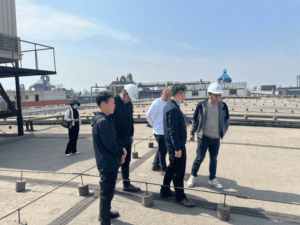
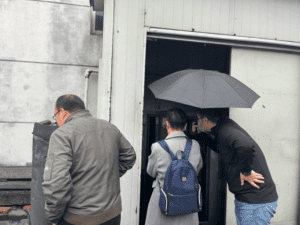
Carbon Target Monitoring (CTM)
To address high carbon emissions in footwear and apparel supply chains, our Carbon Target Monitoring (CTM) program builds on the Carbon Target Setting (CTS) program, guiding producers as they implement and refine low-carbon action plans and tracking their progress toward 2030 climate targets.
It is divided into distinct phases, including data collection, progress monitoring, and one-on-one consulting with producers and engineers to evolve the 2030 low-carbon action plan and impact measurement. The aim is to set a structured framework for producers to embark on their 2030 carbon reduction journey by providing regular touch points, progress follow-up, and technical assistance.
It is divided into distinct phases, including data collection, progress monitoring, and one-on-one consulting with producers and engineers to evolve the 2030 low-carbon action plan and impact measurement. The aim is to set a structured framework for producers to embark on their 2030 carbon reduction journey by providing regular touch points, progress follow-up, and technical assistance.
KEY ACHIEVEMENTS IN 2023:
- The pilot was initiated in 11 producers from one brand
- Pilot countries: China, Taiwan, Province of China, Vietnam, Pakistan, Peru, Malaysia, and Bangladesh
Key Learnings
- The primary challenge is re-engaging producers that completed their Carbon Toolkit over a year ago back into a continuous cycle of action, plan evolution, and progress reporting. CTM tackles these issues by engaging with producers quarterly in a one-on-one engineering discussion to review progress, evolve the action plan, and validate progress made.
- CTM’s scalable approach can be applied across various producers and industries, contributing to long-term environmental sustainability.
Clean by Design Leather (CbD Leather)
Tanning is integral to the fashion world as it transforms raw hides into leather used by high-end and luxury fashion houses to craft premium, iconic products. Much of that material is produced in Italy, a key player in the leather industry that employs over 18,000 workers across 1,100 companies and generates 4.6 billion Euros in value—63% of the EU’s total or 24% of global production.11
Recognizing the tanning sector’s need to accelerate toward a net-zero roadmap, a group of leading luxury brands — including Kering, Prada Group, and Ralph Lauren, among others — joined forces to identify, fund, and scale decarbonization solutions. The group selected our Clean by Design program as a potential solution for the industry.
Italy’s technological advancements, environmental commitment, and innovative capacity in tannery are inspiring. As a result, we are wholeheartedly committed to developing and implementing Clean by Design for Leather in Italy.
Recognizing the tanning sector’s need to accelerate toward a net-zero roadmap, a group of leading luxury brands — including Kering, Prada Group, and Ralph Lauren, among others — joined forces to identify, fund, and scale decarbonization solutions. The group selected our Clean by Design program as a potential solution for the industry.
Italy’s technological advancements, environmental commitment, and innovative capacity in tannery are inspiring. As a result, we are wholeheartedly committed to developing and implementing Clean by Design for Leather in Italy.
KEY LEARNINGS:
- The foundational structure of Clean by Design and its 10 Best Practices apply to textile and leather production as they both involve significant water, energy, and chemical usage.
- The production processes in textile and leather industries differ considerably. Leather production, for instance, usually involves lower water temperatures and longer durations compared to the typical dyeing and finishing processes in textiles. These differences necessitate adjustments to the Clean By Design tools to suit leather production’s unique needs.
The newly created tools will initially be deployed in producers for piloting and optimization. Participating mills will complete a performance scan to identify strengths and opportunities for energy and water efficiency improvement. Subsequently, the producer will receive support in executing an action plan. The program concludes with Aii’s program staff verifying that completed actions meet the program’s standards.

We are set to launch and implement the program in early 2024, with a goal of completing the full project and integrating any learnings in 2025. When the program is fully developed, stakeholders worldwide can adopt these practices to support the tanning industry’s decarbonization efforts.
Regional Expansion in 2023
To address high carbon emissions in footwear and apparel supply chains, our Carbon Target Monitoring (CTM) program builds on the Carbon Target Setting (CTS) program, guiding producers as they implement and refine low-carbon action plans and tracking their progress toward 2030 climate targets.
It is divided into distinct phases, including data collection, progress monitoring, and one-on-one consulting with producers and engineers to evolve the 2030 low-carbon action plan and impact measurement. The aim is to set a structured framework for producers to embark on their 2030 carbon reduction journey by providing regular touch points, progress follow-up, and technical assistance.
It is divided into distinct phases, including data collection, progress monitoring, and one-on-one consulting with producers and engineers to evolve the 2030 low-carbon action plan and impact measurement. The aim is to set a structured framework for producers to embark on their 2030 carbon reduction journey by providing regular touch points, progress follow-up, and technical assistance.
Italy
Italy is central to luxury fashion, and major luxury brands are calling for decarbonization actions while manufacturers are calling for cost savings in response to the energy crisis.
In 2023, Aii focused on building partnerships with Italian experts and organizations to deploy existing solutions, develop new approaches, and build capacity for expansion. We are aiming for large-scale CbD and CTS implementation by 2024, aligning with brands’ 2030 goals.
In 2023, Aii focused on building partnerships with Italian experts and organizations to deploy existing solutions, develop new approaches, and build capacity for expansion. We are aiming for large-scale CbD and CTS implementation by 2024, aligning with brands’ 2030 goals.
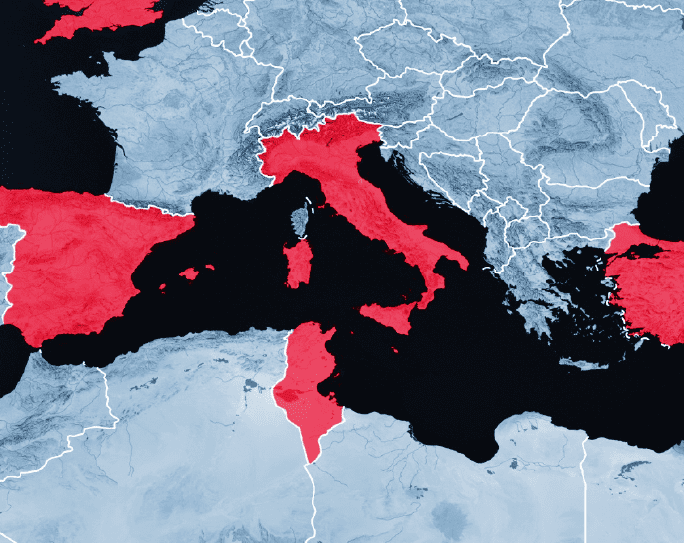
KEY ACHIEVEMENTS IN 2023:
- Continued growing the number of producers and brands implementing the CbD program by four and two, respectively.
- Through brand and producer engagement, we laid the groundwork for substantial growth of CTS and CbD implementation in Italy in 2024. We foresee an increase of four active brands and 34 producers in a low scenario.
- Built partnership to implement Carbon Target Setting. The first Carbon Target Setting kick-off for Italian companies is planned for early 2024 with Process Factory as the implementation partner. The collaboration with Process Factory is strategically designed to achieve closer alignment and integration with 4sustainability®, a leading implementation framework for reducing impact, with a specific focus on 4s PLANET, one of 4sustainability’s six initiatives.
Identified and committed to new solutions:
- CbD for Leather: An impact program to support the tanning industry in implementing efficiency measures for energy, water, and carbon emissions. This will be developed and deployed starting in 2024.
- Electrification of water heating: Pozzi Leopoldo Srl submitted our Climate Solutions Portfolio’s first solution that does not require grant funding and is ready for scaling and deployment through Aii programs. Their solution supports the transition from fossil fuels to electricity, enabling energy savings.
“In the process of harmonizing 4sustainability with the best methodologies and recognized programs, we’re proud to initiate a partnership with Aii to deploy Carbon Target Setting for implementing carbon targets along the supply chain partners. In this regard, our commitment to building responsible supply chains is accelerating, thanks to a unique system that implements and anticipates upcoming regulations, integrating and aligning the best industry programs.”
- FRANCESCA RULLI
CEO of Process Factory
CEO of Process Factory
Bangladesh
Bangladesh, the world’s second-largest exporter of apparel, relies heavily on fossil fuel-based systems for energy generation in its ready-made garment industry, which constitutes 84% of the country’s total exports. With a strong reliance on non-renewable energy sources and ambitious growth plans, the country faces challenges, such as disruptions of power supply, increased operational expenses, and pressure on the current energy system. Decarbonization in Bangladesh not only is important from an environmental perspective — it’s also an economic need.
Two primary opportunities stand out: implementing energy efficiency and transitioning to renewable energy sources. The first program that Aii deployed in Bangladesh was Clean by Design. Traditionally initiated through brand nominations, it has now captured the direct interest of manufacturers, signaling promising opportunities. Primark and Otto Group have nominated producers for the program, and initial assessments indicate great energy reduction potential.
Two primary opportunities stand out: implementing energy efficiency and transitioning to renewable energy sources. The first program that Aii deployed in Bangladesh was Clean by Design. Traditionally initiated through brand nominations, it has now captured the direct interest of manufacturers, signaling promising opportunities. Primark and Otto Group have nominated producers for the program, and initial assessments indicate great energy reduction potential.
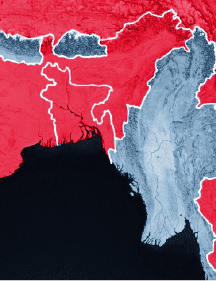
KEY ACHIEVEMENTS IN 2023:
- Employed a Regional Lead, South Asia & Southeast Asia who worked alongside local stakeholders to bring Aii’s solutions to Bangladesh.
- Partnered with Bangladesh Apparel Exchange to raise awareness about solutions at hand that could immediately be deployed.
- Assessed Bangladesh’s first three producers in the Clean by Design Energy Efficiency program. The outcome was an overall potential of 17% CO₂e savings.
- Selected GIZ’s solar PV program in Bangladesh as a Climate Solutions Portfolio grantee. Producer engagement started in late 2023 with eight producers confirming their participation. We are in discussions with nine additional producers that we hope to enroll, and we will recruit another 13 producers through our brand partners in 2024.
“The collaboration between BluWin and Aii has been transformative. Our collaboration focuses on engaging manufacturers and creating a robust ecosystem for the effective implementation of actions aimed at improving resource efficiency and achieving significant GHG reductions. Furthermore, Aii’s commitment to sustainability and dedication to driving positive change through collective action within the apparel industry’s manufacturing sector, is commendable. We are proud to contribute to these impactful initiatives strategically alongside with Aii.”
- DR. SIVA PARITI C.COL. A.S.D.C.
senior technical marketing officer, BluWin
senior technical marketing officer, BluWin
Central and South America
The textile industry in Central and South America holds significant importance to global brands, including several of our partners, due to its proximity to major consumer markets, efficient transportation links, and its ability to meet diverse production demands.

KEY ACHIEVEMENTS IN 2023:
- Employed a Regional Lead, South Asia & Southeast Asia who worked alongside local stakeholders to bring Aii’s solutions to Bangladesh.
- Partnered with Bangladesh Apparel Exchange to raise awareness about solutions at hand that could immediately be deployed.
- Assessed Bangladesh’s first three producers in the Clean by Design Energy Efficiency program. The outcome was an overall potential of 17% CO₂e savings.
- Selected GIZ’s solar PV program in Bangladesh as a Climate Solutions Portfolio grantee. Producer engagement started in late 2023 with eight producers confirming their participation. We are in discussions with nine additional producers that we hope to enroll, and we will recruit another 13 producers through our brand partners in 2024.
Climate Solutions Portfolio
Introduction
Aii’s Climate Solutions Portfolio is the apparel and textile industry’s registry for vetted climate solutions. It simplifies and accelerates the adoption of proven and promising solutions — innovations, projects, or programs — that create a positive impact and deliver measurable CO2e reductions.
We achieve this by offering grant funding to less mature solutions, vetting mature solutions, and amplifying both on our Climate Solutions Portfolio platform. We facilitate and support the deployment and scale of these solutions through our programs, network of brands and producers, and blended capital strategy.
In 2023, we launched our first call for Climate Solutions Portfolio grant applications. We were delighted to receive 140 eligible, completed applications spanning the supply chain and the globe. These applications were evaluated using our key criteria:
We achieve this by offering grant funding to less mature solutions, vetting mature solutions, and amplifying both on our Climate Solutions Portfolio platform. We facilitate and support the deployment and scale of these solutions through our programs, network of brands and producers, and blended capital strategy.
In 2023, we launched our first call for Climate Solutions Portfolio grant applications. We were delighted to receive 140 eligible, completed applications spanning the supply chain and the globe. These applications were evaluated using our key criteria:
Effectiveness
What is the solution’s CO₂e reduction relative to a typical industrial baseline?
Reach
What is the breadth of the supply chain the solution can affect at scale?
Scale
How quickly can this solution scale by 2030?
Funding ask
What is the funding going to be used for and
what can the sector learn from this project?
what can the sector learn from this project?
Solutions That Were Identified in 2023
Based on these criteria and a thorough review of applications, we selected five projects we felt delivered broad sectoral impact; were doing something new, and could scale to support the sector’s ambitious 2030 goals. We have outlined those projects below.
12 $/tCO₂e is calculated by dividing the total grant amount by the forecasted lifetime tCO₂e impact of the grant project.
In this initial group of applications, we saw a significant number focused on low-carbon thermal energy and energy storage. With more than half of the sector’s supply chain emissions originating from energy, it’s essential to transition towards lower carbon thermal energy, such as moving away from coal, and renewable electricity sources, which could be accomplished through energy storage.
Energy storage has the potential to drive decarbonization in both thermal energy and electricity as it can improve business cases. Renewable energy sources often produce energy at times when production is not happening and may produce more energy than is needed at that time. An energy storage approach would ensure this energy does not go to waste, bolstering the investment case for renewable energy. We want
to investigate to what extent this could help the textile & apparel sector transition more quickly to renewable electricity.
Similarly, thermal energy (heat) is a key lever for decarbonization. Choosing an alternative, lower-carbon thermal energy source is very challenging as it is highly dependent on local energy, environmental, and economic factors.
After initial research, the CSP Advisory Council determined they lacked the expertise needed to appropriately evaluate these projects because the textile and apparel sector as a whole lacks knowledge and vision on these topics. This deficiency was also apparent from the applications themselves, which did not adequately consider local context and specific, producer-level needs.
Consequently, for our second round of funding in 2023, we issued a targeted call for applications aimed at developing roadmaps on low- carbon thermal energy and the role of energy storage in decarbonization. These roadmaps will examine key technologies, provide a region-specific view of enabling and constraining conditions, and highlight the steps necessary for deployment. Global Efficiency Intelligence and the Carbon Trust were selected for this important work, and will publish the final roadmaps in Q3 2024 to not only inform CSP grant funding, but also act as a blueprint for manufacturers, brands, and investors to guide their decisions on these topics.
Energy storage has the potential to drive decarbonization in both thermal energy and electricity as it can improve business cases. Renewable energy sources often produce energy at times when production is not happening and may produce more energy than is needed at that time. An energy storage approach would ensure this energy does not go to waste, bolstering the investment case for renewable energy. We want
to investigate to what extent this could help the textile & apparel sector transition more quickly to renewable electricity.
Similarly, thermal energy (heat) is a key lever for decarbonization. Choosing an alternative, lower-carbon thermal energy source is very challenging as it is highly dependent on local energy, environmental, and economic factors.
After initial research, the CSP Advisory Council determined they lacked the expertise needed to appropriately evaluate these projects because the textile and apparel sector as a whole lacks knowledge and vision on these topics. This deficiency was also apparent from the applications themselves, which did not adequately consider local context and specific, producer-level needs.
Consequently, for our second round of funding in 2023, we issued a targeted call for applications aimed at developing roadmaps on low- carbon thermal energy and the role of energy storage in decarbonization. These roadmaps will examine key technologies, provide a region-specific view of enabling and constraining conditions, and highlight the steps necessary for deployment. Global Efficiency Intelligence and the Carbon Trust were selected for this important work, and will publish the final roadmaps in Q3 2024 to not only inform CSP grant funding, but also act as a blueprint for manufacturers, brands, and investors to guide their decisions on these topics.

In addition to our grantmaking, we have developed a strategy for recruiting mature solutions to the Climate Solutions Portfolio — namely solutions that do not need funding. We accepted one solution, Pozzi, as a registered solution and are piloting their route to deployment within Aii’s programs. As we recruit more climate solutions, we are mapping them against Aii’s programs, developing our marketplace, and leveraging our wide network to accelerate deployment. Building out this part of the CSP is a key strategic focus for 2024.
2024 Application Process
As this was Aii’s first experience as a grantmaker, we learned valuable lessons that are driving our strategy for our second year of the Climate Solutions Portfolio. Some key learnings and subsequent strategic changes are outlined in the table below.
Our Grant Funding Thesis, which clarifies what we fund, was published in January 2024 in preparation for our open call for applications on March 1, 2024. Our targeted call for grant applications will launch September 1, 2024. Registry-only solutions will be able to apply on an ongoing basis after May 2024; applications will be reviewed monthly.
Our Grant Funding Thesis, which clarifies what we fund, was published in January 2024 in preparation for our open call for applications on March 1, 2024. Our targeted call for grant applications will launch September 1, 2024. Registry-only solutions will be able to apply on an ongoing basis after May 2024; applications will be reviewed monthly.
“There are a lot of solutions out there, but we need to cut through the noise and really focus on identifying those that deliver verifiable impact and can be deployed at scale. Our 2030 50% goal is coming up, and a lot needs to be deployed and implemented in order to achieve that. CSP is aiming to become the marketplace for that so that we can matchmake producers with the solutions that are right for them and accelerate their deployment.”
- PAULINE OP DE BEECK
Aii’s environmental portfolio lead
Aii’s environmental portfolio lead
BRAND IMPLEMENTATION BENEFITS
The CSP has proven efficacy in reducing Scope 3 GHG emissions, along with other key climate impact metrics.¹³
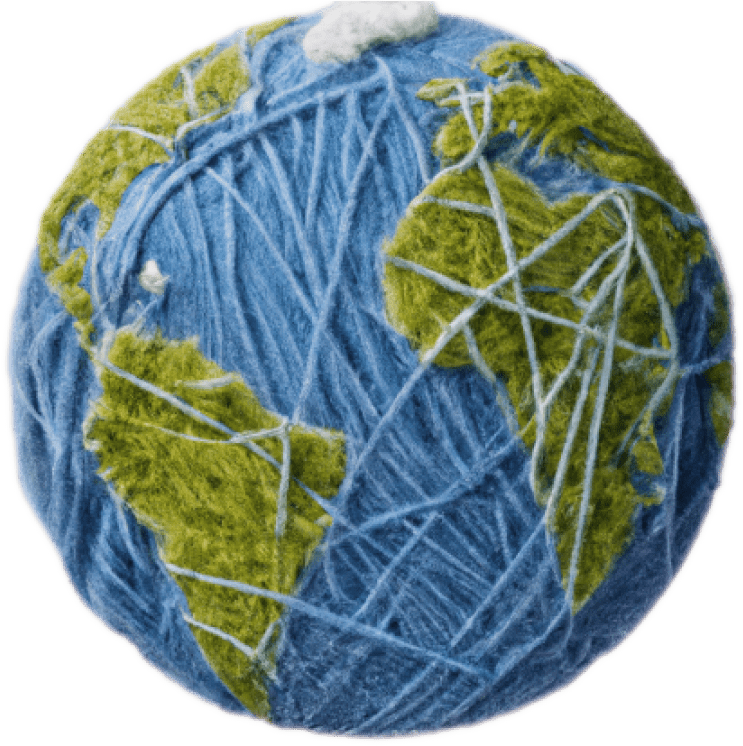
0%
Average actual energy savings per site*
0%
Average actual GHG savings per site*
0%
Average actual water savings per site*
$0
Average actual brand investment cost per tCO₂e reduction.
13. Actual savings and investment data are based on historic data from Aii’s Clean by Design program. These figures will be updated annually with additional data from new CSP solutions.
CSP Technology Platform publication
In 2023, Aii introduced the CSP platform, a software solution aiming to:
- Solve the challenges of identifying effective programs for reducing Scope 3 carbon emissions
- Evaluate and assess solutions for their fit and impact potential, and
- Provide impact reporting that leverages data and analytics to spotlight program progress and facilitate informed decision-making.

The CSP platform delivers a best-in-class experience and suite of features, including a comprehensive registry to make program discovery efficient, ongoing program management of producers enrolled in active programs, and a reporting dashboard for impact measurement.
The CSP platform is constantly evolving and this is just the beginning. Over the next few years, the platform aims to deliver features such as expanded data and verification, quality assurance, vetting and program intake, predictive insights, and program/funding matchmaking.
The CSP platform is constantly evolving and this is just the beginning. Over the next few years, the platform aims to deliver features such as expanded data and verification, quality assurance, vetting and program intake, predictive insights, and program/funding matchmaking.
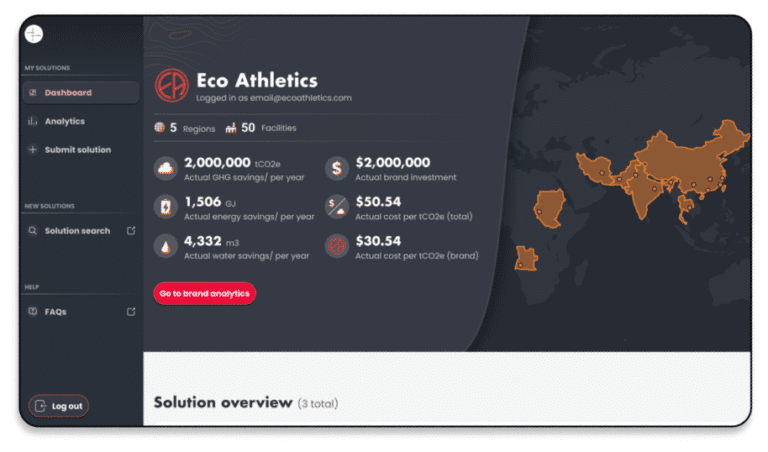


Fashion Climate Fund
Aii’s Fashion Climate Fund is a pooled fund of catalytic capital built by some of the world’s biggest brand retailers, financial institutions, and climate philanthropists to
- 1. ACTIVATE PRODUCERS
We’re subsidizing the start of producers’ sustainability journey and connecting them with technical assistance to evaluate needs based on location, production, and products. - 2. CREATE ROADMAPS
We use a data-driven, science-based approach to “follow the carbon” and identify the exact path a producer must take to meet their climate goals. - 3. BUILD CAPACITY
As part of our ecosystem leadership, we conduct country- and region- specific research to identify proven and promising tools and solutions. - 4. INCREASE AFFORDABILITY
We use a blended capital approach to lower interest rates and create more incentivized finance.
New Partners
In 2023, the Fashion Climate Fund welcomed two significant new funders, marking a pivotal moment in our journey.
At COP28, Aii announced HSBC as a new philanthropic funder, pledging an initial $4M over the next three years alongside in-kind sustainability and trade finance expertise. As the first commercial bank to join as a Fashion Climate Fund Lead Partner, HSBC’s commitment signals the financial community’s growing commitment to decarbonizing our industry.
The bank’s support will fund market insight reports, regional research projects to identify and overcome financial barriers, as well as build connections between producers, brands, NGOs, governments, and financial institutions. HSBC’s contributions will ultimately support building the infrastructure needed to enable partners to identify, measure, secure finance for and deploy decarbonization solutions from renewable energy to energy efficient measures.
The Rockefeller Foundation also committed significant grant support to the Fashion Climate Fund and hosted Aii’s sustainable finance convening at their Bellagio Retreat Center. Rockefeller Foundation funding will enable Aii to continue activating various stakeholder groups and bring these financial tools from conversation to deployment.
At COP28, Aii announced HSBC as a new philanthropic funder, pledging an initial $4M over the next three years alongside in-kind sustainability and trade finance expertise. As the first commercial bank to join as a Fashion Climate Fund Lead Partner, HSBC’s commitment signals the financial community’s growing commitment to decarbonizing our industry.
The bank’s support will fund market insight reports, regional research projects to identify and overcome financial barriers, as well as build connections between producers, brands, NGOs, governments, and financial institutions. HSBC’s contributions will ultimately support building the infrastructure needed to enable partners to identify, measure, secure finance for and deploy decarbonization solutions from renewable energy to energy efficient measures.
The Rockefeller Foundation also committed significant grant support to the Fashion Climate Fund and hosted Aii’s sustainable finance convening at their Bellagio Retreat Center. Rockefeller Foundation funding will enable Aii to continue activating various stakeholder groups and bring these financial tools from conversation to deployment.
Fund Deployment
Funds from the Fashion Climate Fund were actively deployed in 2023 to three major categories:
- Awarding the first Climate Solutions Portfolio grants to five carbon-reduction solutions and inducting them into the CSP registry.
- Subsidizing the start of producers’ sustainability journey and connecting them with technical assistance to evaluate needs based on location, production, and products.
- Conducting country- and region-specific research to identify proven and promising tools and solutions, including engaging partners for two critical carbon roadmaps for thermal energy and energy storage.
Sustainable Finance
Aii’s Sustainable Finance Ecosystem Strategy stems from two industry cornerstone reports: the Roadmap to Net Zero, co-authored with the World Resources Institute, and Unlocking the Trillion Dollar Decarbonization Opportunity, in partnership with HSBC and Fashion for Good.
We have identified sustainable finance as a major tool toward achieving our goal of enabling the removal of at least 100 million tonnes of carbon from the supply chain by 2030. Aii has been stewarding an initiative to unlock $2 billion in capital and pioneer innovative financial vehicles that will make decarbonization capital more accessible to producers.
We have identified sustainable finance as a major tool toward achieving our goal of enabling the removal of at least 100 million tonnes of carbon from the supply chain by 2030. Aii has been stewarding an initiative to unlock $2 billion in capital and pioneer innovative financial vehicles that will make decarbonization capital more accessible to producers.
- 1. There are ambitious and necessary goals the apparel and footwear industry must reach to move toward decarbonization. Under the current trajectory, the industry will miss the 1.5C pathway by 50%.
- 2. Scope 1 and 2 emissions are under the direct control of brands and are easier to abate. However, the complex and fragmented nature of fashion supply chains means that Scope 3, which represents the vast majority of emissions, has historically been overlooked.
- 3. Emissions must be reduced at the producer level for progress to be made. This means funding is required for not only innovations, but also facility retrofitting and energy efficiency capex.
- 4. Access to sustainable finance is a key barrier to decarbonization, alongside nascent energy ecosystems, policy and regulatory environments, lack of infrastructure, alternative fuel availability, and access to local expertise.
- 5. Collective action is imperative to realize the most impactful decarbonization solutions for the apparel and footwear value chains.
Our strategy aligns philanthropic and government grantmakers with industry funding and commercial capital across a shared and agreed- upon suite of solutions to reach the ambitious science-based targets.
Our blended capital approach is expected to have the following outcomes:
Our blended capital approach is expected to have the following outcomes:
- Additionality:
Tadding value via affordable capital to the industry’s current investment ecosystem by (i) using a collaborative approach through the involvement of like-minded stakeholders, and (ii) ensuring reduction of GHG emissions. - Advantage of scale:
financing impactful, lower-cost solutions at scale, improving cost of efficiency and impacts. - Collective action for collective good:
collective funding efforts from apparel and footwear companies are amplified by institutional investors, representing a shared commitment to decarbonizing the value chain and investing in solutions in manufacturing countries — often the most susceptible to the consequences of climate change. - Stakeholder effects:
Aii will endorse the provision of affordable finance to implement decarbonization projects in the manufacturing plants of producers of global textile companies, many of which are SMEs. The decarbonization investments will generate energy and water operational cost savings, improving both competitiveness and attractiveness as producers will now be able to market their decarbonization progress to brands and consumers who are increasingly focused on this issue. - Environmental effects:
Providingthefinancialsupportneededtodeploy energy efficiency, rooftop solar, water, and waste reduction projects will displace power supplied by more carbon-intensive sources. - Value chain enhancements:
Aiiwillpromotegreatersustainabilityin the apparel and footwear market through local capacity building and promote change in practices by global players in the supply chain.
The overall Sustainable Finance Ecosystem strategy’s objective is to further Aii’s impact by:
- 1. Creating a graduation effect from activities undertaken by the Climate Solutions Portfolio grantees.
- 2. Supporting local SMEs to strengthen their ability to navigate the capital continuum from philanthropic sources to commercial success.
- 3. Improving the SME finance market by strengthening investee capacity and supporting new and innovative financial initiatives.
- 4. Developing and sharing knowledge to shorten producers’, brands’, and financial institutions’ learning curves within the SME finance sector.
- 5. Supporting producers and co-investors with reporting acapacity improvements.
2023 Activities and Achievements
Our key activities focused on strategy development, collective action activation, and operationalization of initiatives. In 2023, we hosted two flagship events to align change-makers around the biggest opportunities to urgently act on Scope 3 decarbonization efforts:
- New York Climate Week: Financing Fashion Decarbonization
- Bellagio Retreat: Financing Decarbonization in the Apparel and Footwear Supply Chain
Read more about these events in the following section of the report.

“More than $35 trillion of financial capital is available globally for Environmental, Social, and Governance (ESG) investments. However, there are critical barriers preventing this financial capital from flowing to projects in emerging markets, including currency risk, credit risk, and lack of validated project pipelines. Unlocking sustainable finance requires engagement between brands, producers, financial institutions, and philanthropic funders to create innovative financing mechanisms to solve for these barriers.”
- RYAN GAINES
Aii’s CFO
Aii’s CFO
Thought Leadership
Events & Stakeholder Engagement
FIRST ANNUAL STRATEGY SUMMIT:
In May 2023, Aii gathered 75 stakeholders — including Aii board members, Fashion Climate Fund and brand partners, financial institutions, NGOs, and solutions providers — for three days of meetings, workshops, and focused conversations.
The event served as an opportunity to provide updates and solicit feedback on key Aii topics such as the Climate Solutions Portfolio funding evaluation process and software platform, our sustainable finance strategy, and our approach to decarbonization in the luxury market.
The week capped off with a visit to Mantero Seta, a Tier 2 facility near Milan that has participated in Aii programming.
The event served as an opportunity to provide updates and solicit feedback on key Aii topics such as the Climate Solutions Portfolio funding evaluation process and software platform, our sustainable finance strategy, and our approach to decarbonization in the luxury market.
The week capped off with a visit to Mantero Seta, a Tier 2 facility near Milan that has participated in Aii programming.
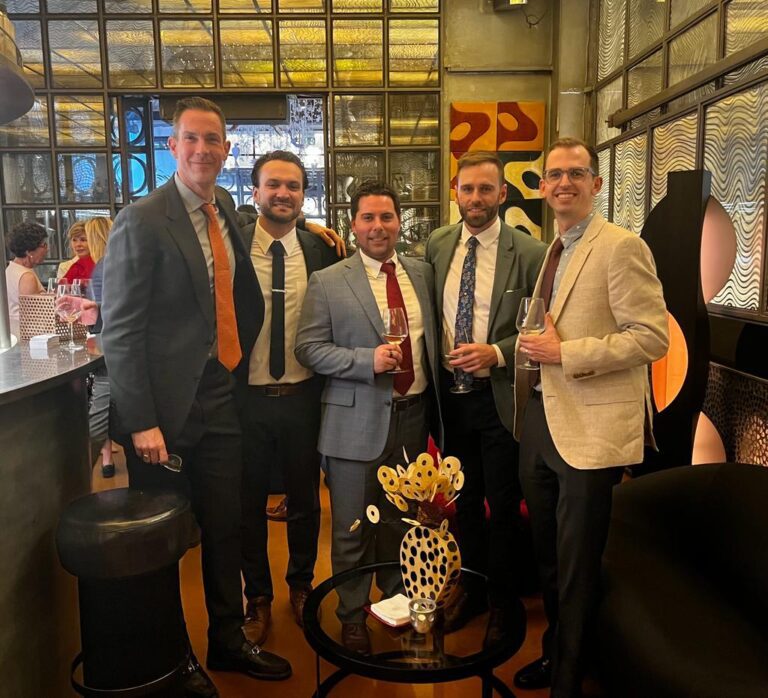

NEW YORK CLIMATE WEEK — FINANCING FASHION DECARBONIZATION:
During New York Climate Week in September 2023, Aii hosted a gathering with a community of over 70 investors, apparel brands, and related ecosystem partners for shared learning towards climate action and unlocking sustainable finance in the industry. The convening included discussions and collaborative strategy sessions focused on the challenges and opportunities across the industry, including specific types of financing structures, potential credit enhancement mechanisms, and ways for stakeholders to work together toward decarbonization.
The following conclusions were drawn:
The following conclusions were drawn:
- Ultimately, a systemic change is needed to foster the climate transformation of apparel stakeholders; improve access to finance, jobs, and income; while also boosting local regulatory conditions.
- To make progress, emissions must be reduced at the producer level. This will require funding for innovations, facility retrofitting, and energy-efficient capex.
- Access to sustainable finance is one of the key barriers to decarbonization alongside nascent energy ecosystems, policy and policy environments, lack of infrastructure, alternative fuel availability, and access to local expertise.
- Industry participation and risk sharing is imperative to realize the most impactful solutions to decarbonizing the apparel and footwear value chain.
BELLAGIO RETREAT — FINANCING DECARBONIZATION IN THE APPAREL AND FOOTWEAR SUPPLY CHAIN:
Following our NY Climate Week event, we partnered with the Rockefeller Foundation to host the Financing Decarbonization in the Apparel and Footwear Supply Chain Retreat at the Bellagio Center in Lake Como.
Key stakeholders from across the value chain — including HSBC, BNP-Paribas, Standard Chartered, MAS Holdings, Brandix, PVH, Lululemon, H&M Group and Guidehouse — gathered to create an activation plan starting with the most critical regions.
Key stakeholders from across the value chain — including HSBC, BNP-Paribas, Standard Chartered, MAS Holdings, Brandix, PVH, Lululemon, H&M Group and Guidehouse — gathered to create an activation plan starting with the most critical regions.
The retreat had the following objectives:
Three working groups composed of participating stakeholders will operationalize and guide these initiatives to address the following drivers and needs:
COP28
Lewis Perkins, Aii president, attended COP28, along with Giovanni Zenteno, director of sustainable finance, and Andres Bragagnini, manager of stakeholder engagement. Lewis participated in several speaking engagements, including a co-hosted conversation at Goals House with HSBC on unlocking the trillion-dollar opportunity to decarbonize the fashion industry.
Lewis also appeared on stage at the World Climate Foundation’s World Investment COP to share insights on the strategies employed by brands to reduce greenhouse gas emissions and attract climate-conscious consumers. He participated in the Sustainable Innovation Forum alongside Alpine Group and others, discussing the theme “Beyond Aspirations: Taking Concrete Steps in the Fashion World.” Lastly, he joined other executives at a Global Fashion Agenda Assembly to present the GFA Monitor publication, which takes stock of the industry’s progress towards a net positive industry and aims to mobilize action through the consolidation of knowledge, proven best practices, data insights and solutions.
Lewis also appeared on stage at the World Climate Foundation’s World Investment COP to share insights on the strategies employed by brands to reduce greenhouse gas emissions and attract climate-conscious consumers. He participated in the Sustainable Innovation Forum alongside Alpine Group and others, discussing the theme “Beyond Aspirations: Taking Concrete Steps in the Fashion World.” Lastly, he joined other executives at a Global Fashion Agenda Assembly to present the GFA Monitor publication, which takes stock of the industry’s progress towards a net positive industry and aims to mobilize action through the consolidation of knowledge, proven best practices, data insights and solutions.
Media Highlights
Introducing the Vogue Business 100 Innovators: Class of 2023
Aii president Lewis Perkins was recognized in September as part of The Vogue Business 100 Innovators Class of 2023 in the category of Sustainability Thought Leaders. This year’s cohort of sustainability innovators comprises founders, activists, organizers, and designers dedicated to reshaping fashion’s impact by minimizing waste and resource depletion. Lewis’ inclusion in this prestigious group highlights the pivotal role Aii plays in advancing impactful initiatives and driving positive, industry-wide change. > Read full story
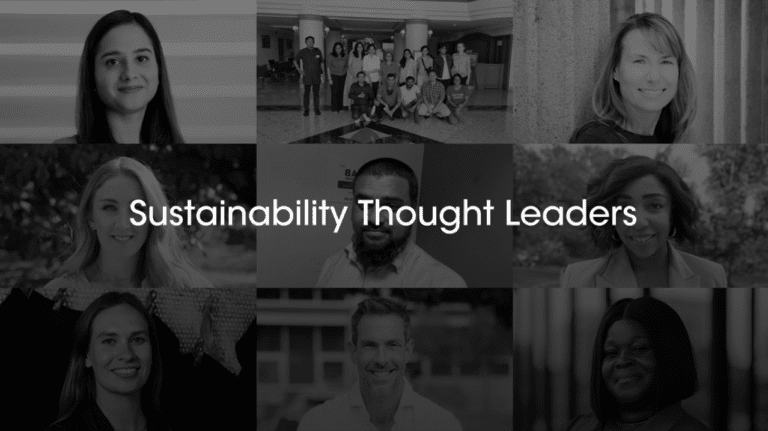

Six major press announcements/pitches
(in comparison to four from May - Dec, 2022)
0
Total Stories
0
Total UVM
- January 31: Apparel Impact Institute Opens First Call for Applications for the Climate Solutions Portfolio
> Press release - April 6: Apparel Impact Institute Welcomes Claire Bergkamp to Board of Directors
> Press release - April 24: Aii 2023 Impact Report (no press release — all targeted pitching via email)
- June2: Roadmap Refresh report“Taking Stock of Progress Against the Roadmap to Net Zero” (no press release — all targeted pitching via email)
- September 19: Apparel Impact Institute Announces First Grant Recipients from
its Climate Solutions Portfolio (CSP) to Help Ignite Carbon Reduction Solutions in the Fashion Industry
> Press release - December 11: Apparel Impact Institute Announces HSBC as New Funder to the Fashion Climate Fund + Debuts new financial tools to help producers finance decarbonization projects with support from Rockefeller Foundation (all targeted pitching via email)
Data & Reporting
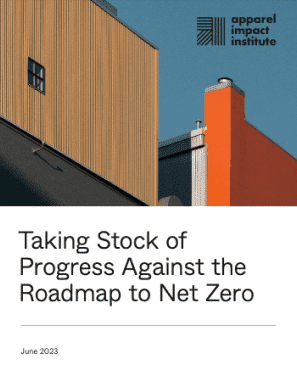
Taking Stock of Progress Against the Roadmap to Net Zero
Taking Stock of Progress Against the Roadmap to Net Zero, published in June 2023, is the highly anticipated sequel to the 2021 Roadmap report.
As with the original report, Aii used data from Cascale, Worldly, and Textile Exchange — with revised assumptions — to refresh the GHG estimate for the apparel sector. The report also includes examples of companies and organizations taking action to reduce emissions across the six interventions.
While the reductions needed to stay within 1.5°C will take a massive effort, the examples in this report are intended to show that progress is possible.
As with the original report, Aii used data from Cascale, Worldly, and Textile Exchange — with revised assumptions — to refresh the GHG estimate for the apparel sector. The report also includes examples of companies and organizations taking action to reduce emissions across the six interventions.
While the reductions needed to stay within 1.5°C will take a massive effort, the examples in this report are intended to show that progress is possible.
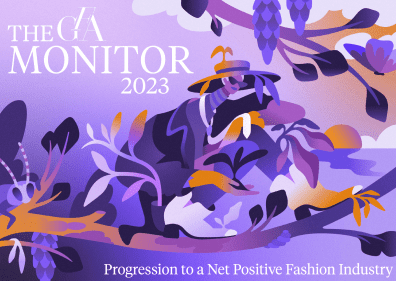
The GFA Monitor 2023
The second GFA Monitor, which launched at COP28, takes stock of the industry’s progress towards net positive and emphasizes the imperative need for social and environmental sustainability. The Monitor also presents a clear pathway forward with proven solutions, credible resources, and industry best practices. Aii contributed to the Monitor as an Impact Partner.
Multi-Stakeholder Initiatives
apparel alliance Working Group
The apparel alliance Working Group convenes data leads and experts from Cascale, ZDHC, Textile Exchange, and Aii. It has shown its strongest progress in the Supply Chain Taxonomy project which aims to achieve a standard framework of agreed-upon definitions and aligned classifications of raw materials, processes, products, operators and producers. The taxonomy framework will enable the Apparel Alliance Data Working Group to map our unique datasets before diving into detailed impact data alignment and/or reporting.
“The apparel alliance’s supply chain taxonomy work aims for industry-wide sustainability implementation and transparency. Ongoing effort focuses on refining standardized data frameworks and fostering coherence in reporting impact. ZDHC’s specific focus is providing insights on sustainable chemical management and its impact areas.”
- FRANK MICHEL
chief executive officer (CEO), Stichting ZDHC Foundation
chief executive officer (CEO), Stichting ZDHC Foundation
“The development of a shared perspective of the apparel supply chain tiers will provide clarity to our industry
and enhance future communications and tool alignment strategies. We look forward to the continuation and release of this work with our apparel alliance partners.”
and enhance future communications and tool alignment strategies. We look forward to the continuation and release of this work with our apparel alliance partners.”
- JOËL MERTENS
director, Higg Product Tools
director, Higg Product Tools
“If we are to create interoperability
for the fashion, textile, and apparel industry, it is essential that we are aligned when it comes to data standards and taxonomy. This enables us to efficiently share data, deliver consistent measurement and reporting, and effectively track our climate and
nature impacts.
Textile Exchange is excited to be part
of the apparel alliance Data Working Group, which started out in 2023.
Our main aim has been to create a shared supply chain taxonomy [and] to facilitate a unified approach to reporting the impacts of various fibers and raw materials across multiple tiers. This is
set to be publicly released in 2024.
Looking ahead, we will be working to develop a harmonized glossary as well
as consensus around how facility identifiers are used. Also in the pipeline, we will be defining the industry’s scope for impact measurement and developing conversion factors for fibers and raw materials throughout the supply chain.”
for the fashion, textile, and apparel industry, it is essential that we are aligned when it comes to data standards and taxonomy. This enables us to efficiently share data, deliver consistent measurement and reporting, and effectively track our climate and
nature impacts.
Textile Exchange is excited to be part
of the apparel alliance Data Working Group, which started out in 2023.
Our main aim has been to create a shared supply chain taxonomy [and] to facilitate a unified approach to reporting the impacts of various fibers and raw materials across multiple tiers. This is
set to be publicly released in 2024.
Looking ahead, we will be working to develop a harmonized glossary as well
as consensus around how facility identifiers are used. Also in the pipeline, we will be defining the industry’s scope for impact measurement and developing conversion factors for fibers and raw materials throughout the supply chain.”
- EVONNE TAN
senior director data and technology, Textile Exchange
senior director data and technology, Textile Exchange
apparel alliance Working Group
The Value Change Initiative (VCI) helps companies and practitioners remove barriers to achieve Net Zero Value Chains. VCI’s focus has been on supporting ambitious corporate Scope 3 climate commitments with technical guidance on credible GHG accounting for value chain interventions associated with category 1: Purchased Goods & Services. These are aligned with leading standards such as Greenhouse Gas Protocol (GHG Protocol), Science Based Target initiative (SBTi) and the International Standard Organisation (ISO).
Between February and November 2023, the VCI hosted the second edition of the Apparel & Footwear Working Group which yielded the following results and takeaways:
Between February and November 2023, the VCI hosted the second edition of the Apparel & Footwear Working Group which yielded the following results and takeaways:
- Identified the general challenges and constraints within the Apparel & Footwear sector.
- Defined two archetypes of interventions across the value chain and their differentiated challenges: Raw Material Interventions and Manufacturing Process interventions.
- Explored different pathways for the implementation of GHG accounting.
- Aligned on key safeguards to enhance credibility and acknowledged the range of solutions objectives.
- Explored simplified practical examples for each archetype of intervention, identifying the challenges and possible sensible scenarios for accounting, reporting, and claiming impact.
- Delved into the barely explored relationship between circularity and Scope 3, identifying the challenges and opportunities.
Fashion Conveners
The Fashion Conveners is a group of leading nonprofits committed to aligning key industry players around bold goals needed to shape a restorative future. The Conveners’ objective is to advance sustainability in fashion through collaboration, clarity, and trust. Aii joined this coalition to leverage partnerships and accelerate collective action within the apparel value chain.
“Engaging with key industry players in 2023 revealed an unprecedented collective action approach, fostering a common language for target-setting and the implementation of decarbonization solutions for the textile and apparel industry. Partnerships continue to be paramount, amplifying our impact as we navigate the intricate web of private, public, and non-profit collaboration. It has been crucial to recognize and address duplicative efforts across the industry while leveraging our own organizational strengths. Our partners continue to look up to us as one of the key drivers for this transformative journey, underscoring our commitment to sustainability by pursuing our mission to identify, fund, and scale proven solutions to decarbonize
the industry.”
the industry.”
- ANDRES BRAGAGNINI
Aii’s manager of stakeholder engagement
Aii’s manager of stakeholder engagement

